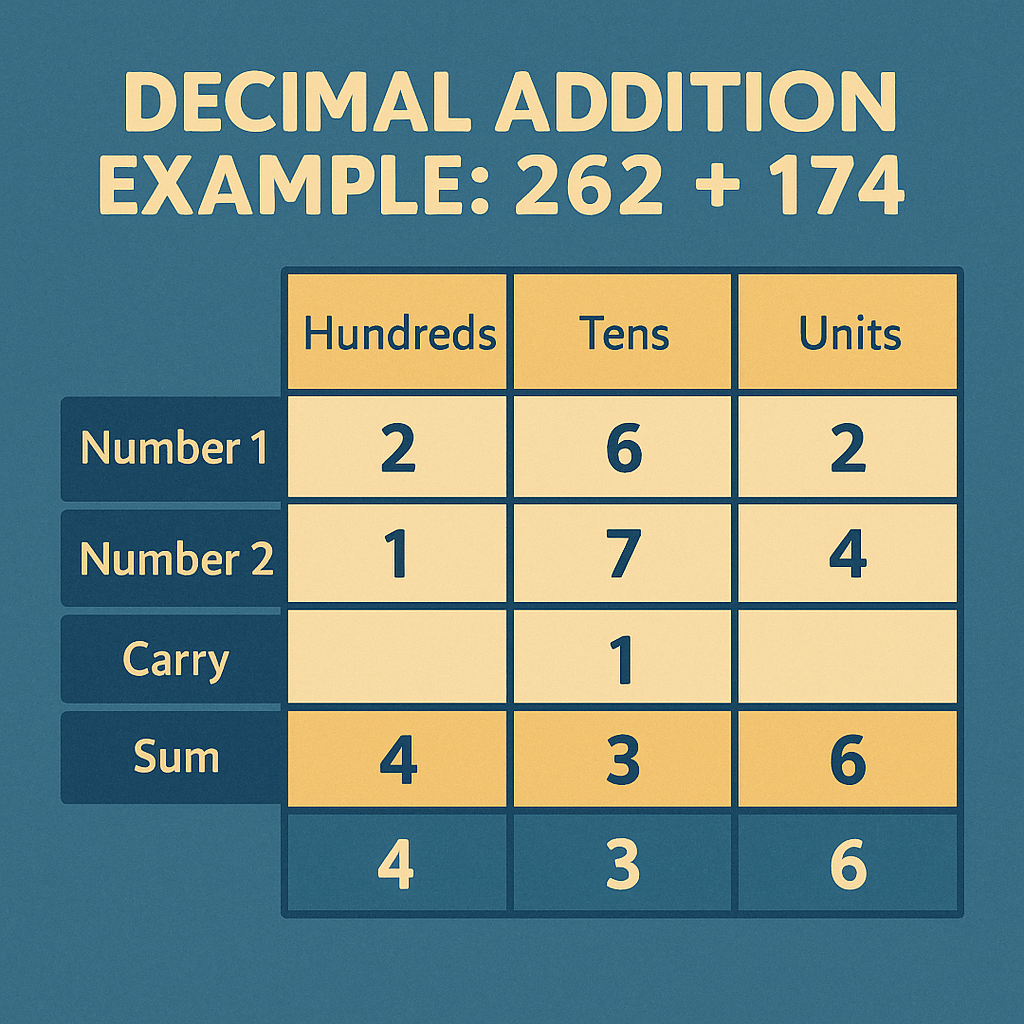Adding Numbers in Decimal
Why Addition Matters
When digital data is stored as numbers, it can be used to perform calculations. For example, entering a
formula such as =A3+B3 in a spreadsheet tells the computer to add the contents of two
cells. Behind the scenes,
the processor uses binary arithmetic to calculate the sum, but the method follows the same pattern you
learned
for adding decimal numbers: align the digits by place value, add from right to left and carry when
needed.
Simple Addition in Decimal
To add multi‑digit numbers, write them one above the other so that units, tens, hundreds and other place values line up. Work from the units column on the right, add the digits, record the result and carry any extra value into the next column. Continue column by column until you have added every place value.
- Add the units column: Add the right‑most digits. If the total is less than 10, write it down. If it is 10 or more, write the units digit and carry the tens digit into the next column.
- Add the tens column: Add the tens digits and any carry from the units column. Again, carry if the total is 10 or more.
- Add higher place values: Repeat this process for the hundreds, thousands and so on until all columns have been added.
The worked example below illustrates adding 262 and 174 using this method. Notice how the carry from the tens column flows into the hundreds column.

Try It Yourself
Practise adding numbers using a similar table. Draw columns for hundreds, tens and units, write one number on the first row and another on the second, then compute the carry and sum rows as shown above. Here are some suggestions to get you started:
- 729 + 252
- 345 + 198
- 58 + 167
Once you are comfortable with decimal addition, you can explore how the same method works for binary numbers in the next lesson.
